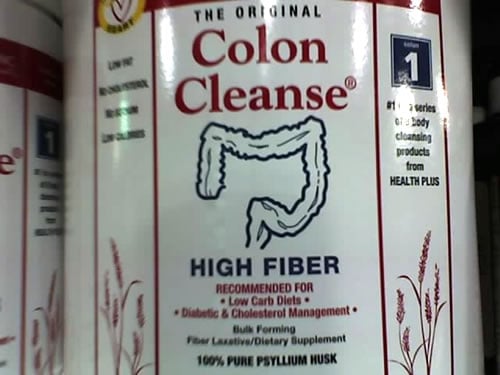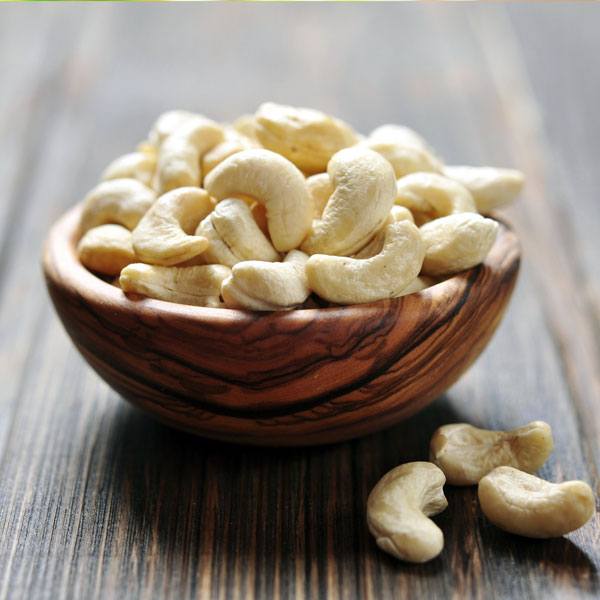A Fiber Primer
Last Updated September 20, 2018 · First Published December 1, 2010

In the past few years there’s been an explosion of foods with added dietary fiber. Heck, even yogurt — which has no naturally-occurring fiber at all — is sometimes being sold as a high-fiber food, since they add it in!
My friend Kate recently told me that she used to judge the healthfulness of a food by its fiber content — it wasn’t a perfect method, of course, but it was a quick and effective shorthand. This was a great strategy, except now if there is added fiber in the food, that method is essentially useless.
But let’s take a step back. Here’s nearly everything you need to know about fiber (with a few links at the bottom in case you want to know more).
What Is Fiber?
Dietary Fiber is any undigestible complex carbohydrate that is found in plants. It’s any part of a plant food that your body can’t absorb. Probably called “roughage” at one point by your grandmother, it’s the stuff that helps keep you “regular.” Turns out, though, it’s much more important than that.
There are two main types of fiber: Soluble and insoluble.
Soluble fiber forms a gel-like material when dissolved in water (hence the name).
Insoluble fiber is the stuff that doesn’t dissolve, and therefore adds bulk to your poop (yeah, I said it).
The Benefits of Fiber
There are some big long-term benefits of having enough fiber in your diet, including lower LDL (“bad”) cholesterol, and possibly a decreased risk of colorectal cancer (jury’s still out on that one, as studies have been inconclusive). Those are important, but not a great motivator, since short-term benefits are more noticeable.
So what do you notice in the short-term when you eat more fiber? Your bowel movements will likely be more regular and easier to pass. You’ll feel fuller and more satisfied when eating meals higher in fiber (especially soluble). It also helps aid in weight loss (and maintenance!), because high-fiber foods tend to take longer to chew (think brussels sprouts and broccoli) and it slows down the rate at which food is emptied from your stomach, so you feel fuller longer. Soluble fiber also helps keep your glucose (blood sugar) levels a bit more even, since it slows digestion and absorption.
How Much Fiber Do You Need?
The Institute of Medicine recommends a minimum total daily fiber intake for adults 50 years and younger of 38 grams for men and 25 grams for women.
Over age 50, they recommend 30 grams for men and 21 grams for women, due to decreased food consumption.
What to Eat
Most foods with naturally-occurring fiber (meaning: plants) have some of each type, though typically in varying proportions. The recommended intake levels don’t specify the type of fiber, and it’s fairly safe to assume that if you’re getting enough fiber from a variety of sources, you should be just fine.
Good sources of Soluble Fiber include (by no means an exhaustive list, but should give you an idea):
- Whole Grains (Here’s how to choose them)
- Beans (Kidney, Pinto, Garbanzo, etc.)
- Vegetables (Brussels sprouts, Broccoli, Spinach, Zucchini, etc.)
- Raw Fruits (Apples, Oranges, etc.)
- Dried Fruits (Prunes/Dried Plums, Figs, etc.)
Good sources of Insoluble Fiber include:
- Nuts
- Seeds
- Vegetables (Especially dark, leafy greens)
- Root Vegetable Skins
- Fruit Skins (Apple, Pear, Kiwi, etc.)
- Whole Grains (Especially from the Bran)
How Much To Eat
So now you know what types of foods have fiber in them, but how much of them do you need to eat? Take a look at some specific foods and how much fiber they contain:
- Raspberries, 1 cup: 8.0 g
- Avocado, 1/2 medium: 6.0 g
- Apple, medium, with skin: 4.4 g
- Banana, medium, without skin: 3.1 g
- Whole Wheat Pasta, 1 cup cooked: 6.2 g
- Oatmeal, 1 cup cooked: 6-8 g
- Brown Rice, 1 cup cooked: 3.5 g
- Whole Wheat Bread, 1 slice: 2-5 g (varies widely, so read the label)
- Black Beans, 1/2 cup cooked: 7.5 g
- Almonds, 1 ounce (23 nuts): 3.5 g
- Peas, 1/2 cup cooked: 4.4 g
- Broccoli, 1/2 cup boiled: 2.6 g
- Potato, baked with skin on: 2.9 g
- Brussels Sprouts, 1/2 cup cooked: 2.0 g
- Carrot, 1 medium, raw: 1.7 g
Want more? Here’s a larger list from the Mayo Clinic, and you can search on NutritionData.com.
Here’s a simple example of how this could add up over the course of your day (this might be right for a woman who needs about 1,800 calories a day, give or take):
Breakfast: Bowl of oatmeal (6 g) with 1/2 cup raspberries (4 g), and glass of milk (0 g).
Morning Snack: Bowl of grapes (1 g).
Lunch: Sandwich on two slices of whole wheat bread (6 g), a cup of “baby” carrots (2 g), Blue Raspberry Slush Puppie (0 g — just seeing if you’re paying attention!).
Afternoon Snack: Handful of almonds (3.5 g) and an apple (4.4 g).
Dinner: Whole Wheat Pasta with tomato sauce (6.2 g), steamed brussels sprouts (2 g), and 3 ounces of wild Alaskan Salmon (0 g).
Daily Total: 35.1 g (Far above the minimum recommendation for women — good job!)
“Functional Fiber”
Manufacturers are now adding “functional fiber” to a huge number of food products, so it has become difficult to tell what is naturally-occurring and what isn’t. According to the 2005 dietary guidelines, Functional Fiber consists of “isolated, nondigestible carbohydrates that have beneficial physiological effects in humans.”
The total fiber listed on a nutrition facts panel is the sum of the naturally-occurring dietary fiber and the added functional fiber.
Unfortunately, though, the benefit of this added fiber is not nearly as well known or as well studied. It’s unlikely that any will be harmful (though if you eat way too much fiber of any kind, or increase your total intake a bit too rapidly, you may have gas, bloating, or cramps — so take it slow!). As with almost anything, eating fresh, whole foods is much more likely to be beneficial.
The biggest problem is that the source of fiber is not specified in the total amount on the label. Although a label will occasionally differentiate between soluble and insoluble fiber, I have never seen a nutrition facts panel distinguish between naturally-occurring and added fiber.
So what can you do? Once again, knowledge is power. If you see any of these in the ingredient list, know that the total fiber listed on the product is, at least in part, coming from one of these isolated, added fibers:
- Inulin
- Chickory Root Extract
- Cellulose
- Oligosaccharides (such as Oligofructose)
- Fructooligosaccharides
- Polysaccharides
- Dextrins (such as Maltodextrin)
- Fructans
- Guar Gum
- Acacia Gum
- Xanthan Gum
- Psyllium seed husk
Putting It All Together
I want to be very clear, so it bears repeating: The added fibers aren’t likely to be “bad” for you, and some can be beneficial. (Note that the gums may be added for other properties, such as texture, rather than to increase the fiber content). So don’t stress if you see these ingredients on the label — but you have to use some common sense. Would the food normally have enough fiber? Are you eating this food because of the fiber content? There are some very good reasons to eat yogurt, for example, but increasing your fiber intake isn’t one of them.
Once again, the bottom line is this: Eating a wide variety of fresh, whole fruits, vegetables, grains, and legumes is the best strategy for both short- and long-term health benefits.
—
Sources, References, and Further Reading:
Dietary Fiber: Essential for a Healthy Diet (Mayo Clinic)
Wikipedia page on Dietary Fiber
A Brief Overview on Dietary Supplements like Metamucil, Citrucel, etc. (WiseGeek.com)
Is Added Fiber Beneficial? (FYILiving.com)
Institute of Medicine’s 2005 Dietary Reference for Fiber (Chapter 7)
Health Benefits of Dietary Fiber (Thorough article in Nutrition Reviews, Apr. 2009)
Trends in Dietary Fiber in the U.S. Food Supply (PDF, from USDA’s Center for Nutrition Policy and Promotion, Dec. 2007)
Photo by Jason Tester.



















